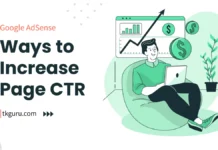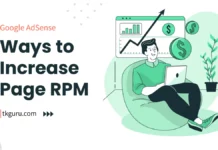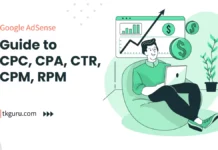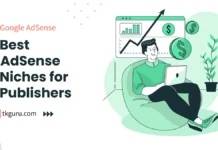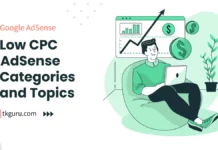Advertisements
Ratings
“How to create Google Adsense Account?
Which is the easy method to create Google Adsense Account?
The article below has answers to all your questions.
Please read this article carefully.”
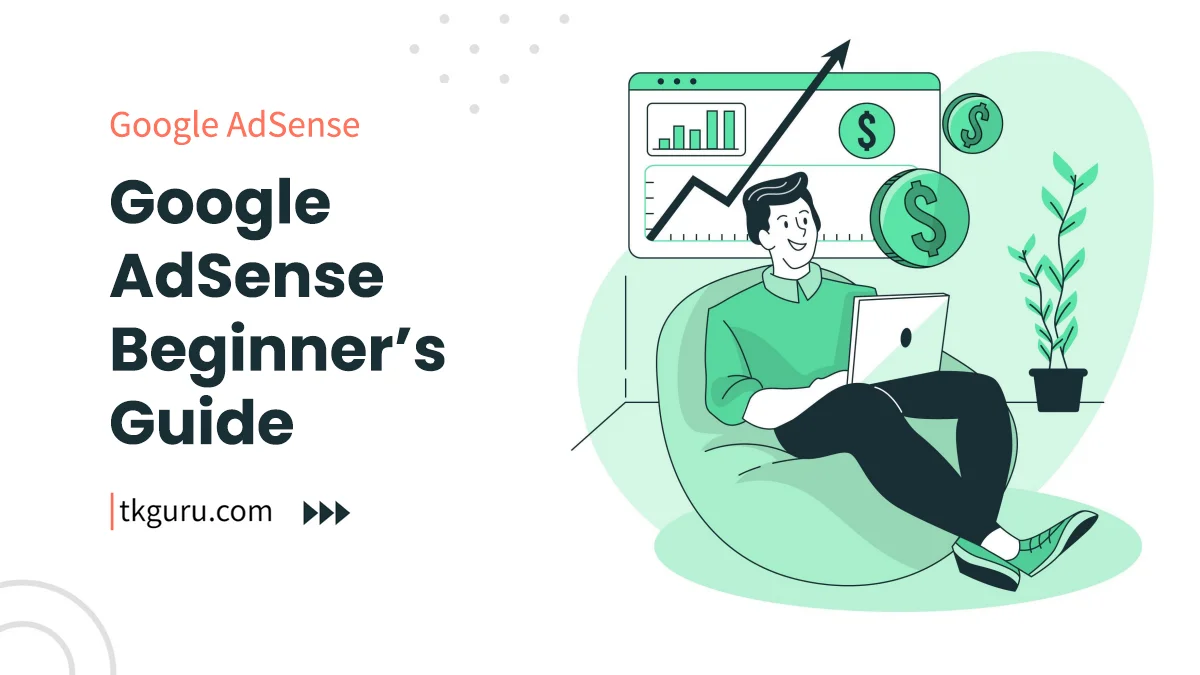
google-adsense-guide
Google AdSense – Welcome to the ultimate beginner’s guide to Google AdSense – your gateway to unlocking revenue potential from your website!
In this comprehensive guide, we’ll walk you through every step of setting up and optimizing your AdSense account to start earning money through online advertisements.
Whether you’re a blogger, content creator, or website owner, AdSense can help turn your digital efforts into a sustainable income stream.
Contents
- 1. What is Google AdSense?
- 2. Why Choose AdSense for Monetization?
- 3. Understanding Google AdSense
- 4. Setting Up Your AdSense Account
- 5. Integrating AdSense with Your Website
- 6. AdSense Policies and Guidelines
- 7. Monitoring and Analyzing Performance
- 8. Maximizing AdSense Earnings
- 9. Dealing with Ad Blockers
- 10. Mobile Optimization for AdSense Ads
- 11. Getting Paid with AdSense
- 12. Troubleshooting Common Issues
- 13. Scaling AdSense Earnings: From Small to Big
- 14. Google AdSense Innovations: Staying Ahead in Online Advertising
- Conclusion: Embarking on Your AdSense Journey
- Google AdSense Account FAQs
1. What is Google AdSense?
Google AdSense is a powerful advertising program by Google that allows website owners and publishers to monetize their online content by displaying targeted ads to their visitors.
These ads are managed by Google, which matches them to the content and interests of your audience.
AdSense offers a straightforward way for publishers to generate income by providing space on their websites for advertisers to showcase their products or services.
2. Why Choose AdSense for Monetization?
AdSense offers several advantages for beginners and experienced publishers alike:
- User-Friendly: Setting up AdSense requires minimal technical knowledge, making it accessible to individuals of all skill levels.
- Automated Management: Google handles the ad selection and placement, ensuring relevant ads are shown to your audience.
- Diverse Ad Formats: AdSense provides a variety of ad formats, including text, display, and native ads, allowing you to choose what fits best with your website’s design.
- Revenue Potential: As your website traffic and engagement grow, so do your earnings potential with AdSense.
Table 1: AdSense Ad Formats
| Ad Format | Description |
|---|---|
| Text Ads | These are simple text-based ads that blend well with your content. |
| Display Ads | Visual ads, including images and banners, that can be placed within your content or sidebar. |
| Native Ads | Advertisements designed to match the look and feel of your website, enhancing user experience. |
| Link Ads | Ad units containing a list of text links, ideal for navigation menus or sections with related links. |
Throughout this guide, we’ll provide step-by-step instructions, tips, and insights to help you make the most of your AdSense journey.
So, let’s dive in and discover how you can start monetizing your website through Google AdSense!
3. Understanding Google AdSense
Before you dive into setting up your AdSense account, it’s essential to understand how the program works and the key terms associated with it.
3.1 How AdSense Works
Google AdSense operates on a simple principle: advertisers pay Google to display their ads on relevant websites, and publishers (you) get a share of that revenue when users interact with these ads.
AdSense employs contextual targeting, which means the displayed ads are tailored to match the content of your website and the interests of your visitors.
3.2 Key Terms to Know
To navigate the world of AdSense effectively, familiarize yourself with these key terms:
- Impressions: The number of times an ad is viewed on your website.
- Clicks: The number of times users click on ads displayed on your website.
- Click-Through Rate (CTR): Calculated by dividing the number of clicks by the number of impressions and then multiplying by 100. It measures the effectiveness of your ads in attracting clicks.
- Cost Per Click (CPC): The amount advertisers pay you when a user clicks on an ad.
- Revenue Per Thousand Impressions (RPM): The estimated earnings you can generate for every thousand ad impressions.
Table 2: Common AdSense Metrics
| Metric | Formula | Description |
|---|---|---|
| Impressions | N/A | How many times ads are shown on your website. |
| Clicks | N/A | The number of times users click on ads. |
| CTR | (Clicks / Impressions) * 100 | The percentage of ad views that resulted in clicks. |
| CPC | Total Earnings / Clicks | The average amount earned per ad click. |
| RPM | (Total Earnings / Impressions) * 1000 | Estimated earnings per 1000 ad impressions. |
Understanding these terms will help you monitor and optimize your AdSense performance effectively.
In the next section, we’ll delve into the process of setting up your AdSense account and integrating it with your website to start monetizing your content.
4. Setting Up Your AdSense Account
Now that you have a clear understanding of AdSense basics, it’s time to set up your AdSense account and get ready to monetize your website.
4.1 Creating a Google Account (if Needed)
Before you proceed, ensure you have a Google account. If you already have one, you can use it to log in to AdSense. If not, follow these steps to create a Google account:
- Visit the Google Account creation page.
- Fill in your personal information, such as your name, email address, and password.
- Complete the verification process by entering a code sent to your email or phone.
Once you have a Google account, follow these steps to access the AdSense dashboard:
- Visit the Google AdSense website.
- Click the “Sign In” button in the upper-right corner and enter your Google account credentials.
- If it’s your first time using AdSense, you’ll be prompted to set up your account. Otherwise, you’ll be taken to your AdSense dashboard.
4.3 Account Setup Process
Completing your account setup is the next crucial step:
- Website Information: Provide details about your website, including its URL and primary language. This information helps AdSense understand your content and audience.
- Content Language: Choose the primary language of your website. AdSense will display ads that match this language to ensure relevance.
- Ad Types and Locations: Select the types of ads you want to display on your website. You can also choose specific ad sizes and placements. Consider using a combination of text, display, and native ads for variety.
Table 3: Ad Types and Locations
| Ad Type | Description |
|---|---|
| Text Ads | Inserted within your content, often blending seamlessly with text. |
| Display Ads | Typically shown in prominent positions, such as the header or sidebar. |
| Native Ads | Designed to match your website’s look, providing a natural feel. |
| Link Ads | A list of text links, ideal for navigation menus or related content. |
As you complete these setup steps, you’re well on your way to integrating AdSense with your website.
The next section will guide you through the process of integrating ad units and effectively placing ads to maximize your revenue potential.
5. Integrating AdSense with Your Website
Now that your AdSense account is set up, it’s time to integrate ad units into your website. This process involves generating ad code from AdSense and strategically placing it on your web pages.
5.1 Generating Ad Units in AdSense
Follow these steps to create and generate ad units in your AdSense account:
- Log in to your AdSense account and navigate to your dashboard.
- Click on “My ads” from the left-hand menu.
- Click the “+ New ad unit” button.
- Choose the ad type you want to create (text, display, native, link).
- Configure the settings for your ad unit, including size, style, and ad type.
- Give your ad unit a name for easy identification.
- Click “Create” to generate the ad code.
5.2 Different Ad Formats and Placements
Now that you have your ad code, it’s time to strategically place the ads on your website. Consider the following tips:
- Text Ads: Integrate these within your content to maintain a seamless flow. Place them near high-traffic areas, like the beginning of articles.
- Display Ads: These eye-catching visuals can be positioned in the header, sidebar, or within the content, but ensure they don’t overwhelm your content.
- Native Ads: Blend these ads with your content by placing them in between paragraphs or within related content sections.
- Link Ads: These work well in navigation menus, offering users additional relevant options to explore.
Table 4: Ad Placement Best Practices
| Ad Type | Recommended Placements |
|---|---|
| Text Ads | Within content, start of articles |
| Display Ads | Header, sidebar, within content |
| Native Ads | Between paragraphs, related content |
| Link Ads | Navigation menus, related sections |
Striking the right balance between ad placement and user experience is key to maintaining engagement while generating revenue.
In the next section, we’ll explore AdSense policies and guidelines to ensure your account stays compliant and optimized for success.
6. AdSense Policies and Guidelines
As you embark on your AdSense journey, it’s crucial to be aware of and adhere to Google’s policies and guidelines.
Complying with these rules ensures a positive user experience, sustained monetization, and a healthy online ecosystem.
6.1 Importance of Adherence
Google enforces policies to maintain the quality of ads and the websites they appear on. Violating these policies can result in account suspension or even permanent bans.
Prioritize user experience and the integrity of your content to build a reputable online presence.
6.2 Understanding Prohibited Content and Activities
Certain content and activities are prohibited within the AdSense program. These include, but are not limited to:
- Adult content
- Hate speech
- Misleading or fraudulent behavior
- Copyright infringement
Always review Google’s AdSense Program Policies to ensure your website aligns with their guidelines.
6.3 AdSense Quality Guidelines
To ensure your ads are high-quality and relevant, consider the following tips:
- Original Content: Publish original, valuable content that meets users’ needs.
- Mobile-Friendly: Optimize your website for mobile users to enhance their experience.
- Ad Placement: Place ads naturally within your content without disrupting the user’s flow.
- Ad Density: Avoid overwhelming pages with excessive ads.
Table 5: AdSense Quality Guidelines
| Guideline | Description |
|---|---|
| Original Content | Provide valuable and unique content for your audience. |
| Mobile-Friendly | Ensure your website is responsive and mobile-friendly. |
| Ad Placement | Integrate ads without disrupting user experience. |
| Ad Density | Avoid excessive ads that negatively impact usability. |
By following these guidelines, you’ll create a positive environment for both users and advertisers.
In the next section, we’ll explore how to monitor and analyze your AdSense performance using the AdSense dashboard.
7. Monitoring and Analyzing Performance
As you continue your AdSense journey, it’s important to regularly monitor and analyze the performance of your ads. The AdSense dashboard provides valuable insights that can help you make informed decisions to optimize your revenue.
Logging into your AdSense account grants you access to a comprehensive dashboard that displays key performance metrics. Here’s how to navigate it:
- Log in to your AdSense account.
- From the left-hand menu, select “Overview” to view a summary of your account’s performance.
- Explore other tabs like “Performance Reports” for detailed insights.
7.2 Key Performance Metrics
Understanding performance metrics is crucial for optimizing your ad strategy. Here are some key metrics to focus on:
- Impressions: The number of times ads are viewed on your website.
- Clicks: The number of times users click on ads.
- Click-Through Rate (CTR): The ratio of clicks to impressions, indicating ad effectiveness.
- Cost Per Click (CPC): The average earnings per ad click.
- Revenue Per Thousand Impressions (RPM): Estimated earnings for every 1000 ad impressions.
Regularly monitoring these metrics helps you assess ad performance and make data-driven adjustments.
Table 6: Performance Metrics and Interpretation
| Metric | Interpretation |
|---|---|
| Impressions | How often ads are displayed on your website. |
| Clicks | User engagement with ads, indicating ad relevance. |
| CTR | The effectiveness of ads in driving clicks. |
| CPC | The average value of each ad click. |
| RPM | Estimated earnings per 1000 ad impressions. |
In the next section, we’ll explore strategies to maximize your AdSense earnings by optimizing ad placement and content.
8. Maximizing AdSense Earnings
Now that you’re familiar with monitoring performance, let’s delve into strategies for maximizing your AdSense earnings.
By optimizing ad placement, content, and targeting, you can increase your revenue potential.
8.1 Improving Click-Through Rate (CTR)
A higher CTR indicates that your ads resonate with your audience. Consider these tips to boost your CTR:
- Relevant Content: Ensure that your content is closely related to the ads being displayed.
- Strategic Placement: Experiment with placing ads in prominent positions within your content.
- Compelling Ad Copy: Craft engaging ad copy that encourages users to click.
8.2 Increasing Cost Per Click (CPC)
Higher CPC values mean each click generates more revenue. Strategies to increase CPC include:
- Quality Content: High-quality content attracts advertisers willing to pay more for ad space.
- Keyword Research: Target high-value keywords relevant to your niche.
- Competition Analysis: Understand your competitors and identify opportunities for higher bids.
8.3 Targeting High-Paying Niches
Some niches yield higher CPC and RPM due to more competitive bidding. Research and focus on niches that align with your website’s content while offering potential for better earnings.
Incorporating these strategies can lead to a noticeable increase in your AdSense earnings over time.
Table 7: Strategies for Maximizing AdSense Earnings
| Strategy | Description |
|---|---|
| Improve CTR | Enhance user engagement to drive more ad clicks. |
| Increase CPC | Optimize content and targeting for higher CPC values. |
| Target Niches | Focus on high-paying niches to boost earnings potential. |
In the next section, we’ll address a common challenge: dealing with ad blockers and maintaining your AdSense revenue.
9. Dealing with Ad Blockers
Ad blockers can impact your AdSense revenue by preventing ads from being displayed to users who have these tools enabled.
While you can’t completely eliminate ad blockers, you can take steps to mitigate their effects.
9.1 The Impact of Ad Blockers
Ad blockers prevent ads from loading on websites, leading to lower impressions, clicks, and ultimately, reduced revenue.
It’s estimated that a significant percentage of internet users employ ad blockers to enhance their browsing experience.
9.2 Strategies to Address Ad Blockers
While you can’t force users to disable ad blockers, you can employ these strategies to work around them:
- Educate Users: Politely ask users to consider disabling their ad blocker for your site to support your content.
- Offer Premium Content: Provide an ad-free version of your site to users who subscribe or pay a fee.
- Native Monetization: Incorporate native advertising that ad blockers may have difficulty detecting.
- Diversify Revenue: Explore alternative revenue streams, such as sponsored content, affiliate marketing, or premium memberships.
Table 8: Strategies to Counter Ad Blockers
| Strategy | Description |
|---|---|
| Educate Users | Appeal to users to disable ad blockers for your site. |
| Premium Content | Offer an ad-free experience through subscription. |
| Native Monetization | Use ad formats that blend seamlessly with content. |
| Diversify Revenue | Explore other income sources beyond ads. |
By implementing these strategies, you can minimize the impact of ad blockers on your AdSense revenue and maintain a sustainable income.
In the upcoming section, we’ll delve into the importance of optimizing your website for mobile users to enhance your AdSense performance.
10. Mobile Optimization for AdSense Ads
With a growing number of users accessing the internet from mobile devices, optimizing your website for mobile users is essential for maximizing your AdSense revenue.
10.1 The Importance of Mobile-Friendly Design
A mobile-friendly website ensures a seamless and enjoyable experience for visitors using smartphones and tablets.
Google also ranks mobile-friendly sites higher in search results, leading to increased organic traffic.
10.2 Tips for Mobile Optimization
Consider these tips to optimize your website for mobile users:
- Responsive Design: Use a responsive design that adapts to different screen sizes and orientations.
- Fast Loading Times: Optimize images and code to ensure fast loading on mobile devices.
- Ad Placement: Test ad placement to ensure it’s effective and user-friendly on mobile screens.
- Readable Fonts: Choose legible fonts and font sizes for mobile users.
Table 9: Mobile Optimization Tips
| Optimization Tip | Description |
|---|---|
| Responsive Design | Create a site that adapts to various screen sizes. |
| Fast Loading | Optimize images and code for quick mobile loading. |
| Effective Ad Placement | Ensure ads are strategically placed on mobile screens. |
| Readable Fonts | Choose fonts that are easy to read on smaller screens. |
Enhancing the mobile experience not only benefits your AdSense earnings but also contributes to overall user satisfaction.
In the next section, we’ll discuss the payment methods, schedule, and requirements for receiving your AdSense earnings.
11. Getting Paid with AdSense
Congratulations on your efforts to optimize your AdSense performance! Now, let’s explore how you can receive the earnings you’ve generated through your hard work.
11.1 Payment Methods and Thresholds
AdSense offers various payment methods to choose from, including direct bank deposits, wire transfers, and checks.
Before you can receive payments, you need to reach the payment threshold, which is the minimum amount you need to accumulate before AdSense issues a payment.
11.2 Setting Up Payment Information
To set up your payment information, follow these steps:
- Log in to your AdSense account.
- Navigate to “Payments” from the left-hand menu.
- Click on “Payment settings” and select your preferred payment method.
- Provide the necessary payment details, such as your bank account information.
- Set your payment threshold based on the options available in your country.
11.3 Payment Schedule and Cycles
Google issues payments on a monthly basis, typically around the 21st of each month. Keep in mind that there may be a delay between reaching the payment threshold and actually receiving your payment due to processing times.
Table 10: Payment Methods and Setup
| Payment Method | Description |
|---|---|
| Direct Deposit | Convenient transfer of earnings to your bank account. |
| Wire Transfer | International option for transferring funds. |
| Checks | Physical checks sent to your mailing address. |
In the next section, we’ll guide you through troubleshooting common issues that you might encounter during your AdSense journey.
12. Troubleshooting Common Issues
While AdSense is designed to be user-friendly, you might encounter some common issues along the way. Here are solutions to troubleshoot and resolve them:
12.1 Addressing Discrepancies in Ad Performance
If you notice discrepancies in the number of clicks or impressions reported by AdSense and your analytics platform, consider these steps:
- Time Zone Differences: Ensure both AdSense and your analytics platform are set to the same time zone.
- Caching Issues: Clear your browser cache and cookies to eliminate potential data conflicts.
- Invalid Clicks: Google filters out invalid clicks to ensure accurate reporting. If you believe valid clicks are being filtered, contact AdSense support.
12.2 Common Reasons for Policy Violations
If you receive a policy violation notification, follow these steps to address the issue:
- Review Violation: Carefully read the violation notice to understand the specific policy you’ve violated.
- Rectify Content: Make the necessary changes to your content to comply with AdSense policies.
- Request Review: If you’ve made corrections, request a review through the AdSense dashboard.
12.3 Technical Issues and Troubleshooting Steps
For technical glitches or issues with ad display, consider the following troubleshooting steps:
- Ad Code Placement: Ensure you’ve correctly placed the ad code on your website following Google’s guidelines.
- Browser Compatibility: Check if the issue persists across different browsers and devices.
- Ad Blockers: Test your website with ad blockers enabled to identify any display issues.
In the next section, we’ll explore strategies for scaling your AdSense earnings as your website’s traffic and engagement grow.
13. Scaling AdSense Earnings: From Small to Big
As your website’s traffic and engagement increase, there are strategic steps you can take to scale your AdSense earnings for more substantial revenue.
13.1 Strategies for Increasing Website Traffic
A larger audience translates to more ad impressions and potential clicks. Here are strategies to boost your website traffic:
- Quality Content: Continue producing valuable, engaging, and relevant content that attracts and retains visitors.
- SEO Optimization: Implement effective search engine optimization to improve your website’s visibility on search engines.
- Social Media Promotion: Share your content on social media platforms to reach a broader audience.
- Guest Posting: Collaborate with other websites to tap into their audience and gain exposure.
13.2 Expanding Content and Engagement
Diversifying your content and enhancing user engagement can lead to higher ad interactions:
- Multimedia Content: Incorporate videos, infographics, and interactive elements to captivate your audience.
- Community Building: Encourage user comments, discussions, and forums to foster a sense of community.
- Email Subscriptions: Offer email subscriptions to keep users engaged with your latest updates.
13.3 Challenges and Considerations
Scaling your AdSense earnings requires time and effort. Be aware of potential challenges such as increased competition, the need for consistent quality, and balancing monetization with user experience.
Table 11: Strategies for Scaling AdSense Earnings
| Strategy | Description |
|---|---|
| Increase Traffic | Attract more visitors through various channels. |
| Expand Engagement | Create interactive content to engage users. |
| Manage Challenges | Address potential obstacles while scaling your site. |
In the next section, we’ll explore the latest innovations and updates in the Google AdSense platform.
14. Google AdSense Innovations: Staying Ahead in Online Advertising
As the digital landscape evolves, Google AdSense continues to introduce new features and tools to enhance your monetization efforts.
Staying informed about these innovations can give you a competitive edge in the online advertising realm.
14.1 Benefits of Staying Updated
By keeping up with AdSense innovations, you can:
- Enhance User Experience: New features often focus on improving user engagement and ad relevance.
- Optimize Revenue: Innovations can help you maximize earnings through more effective ad placements and formats.
- Stay Compliant: Google introduces updates to ensure compliance with changing industry standards and user preferences.
14.2 Exploring AdSense Innovations
Google regularly introduces enhancements to the AdSense platform. Some recent innovations include:
- Auto Ads: This feature uses machine learning to automatically optimize ad placements for better performance.
- AdSense Labs: Test new features and experiments to discover what works best for your website.
- Enhanced Reporting: Access detailed insights into ad performance, user behavior, and revenue metrics.
By actively exploring these innovations, you can adapt your strategy to take advantage of new opportunities.
In conclusion, your journey with Google AdSense is a continuous learning experience. By following the steps outlined in this guide and staying updated with the latest developments, you can create a successful and rewarding monetization strategy for your website.
Conclusion: Embarking on Your AdSense Journey
Congratulations! You’ve now gained a solid understanding of Google AdSense and how to kickstart your journey towards monetizing your website.
Throughout this comprehensive guide, we’ve covered the fundamental concepts, setup process, optimization strategies, troubleshooting, and even scaling your earnings.
Remember that while Google AdSense offers a straightforward way to generate revenue from your online content, success requires dedication, patience, and a commitment to delivering quality to your audience. As you embark on your AdSense journey, keep these key takeaways in mind:
- User Experience Matters: Prioritize your audience’s experience by integrating ads seamlessly and offering valuable content.
- Stay Informed: Regularly explore AdSense updates, innovations, and best practices to stay ahead in the ever-changing digital landscape.
- Adapt and Experiment: Be open to testing different ad formats, placements, and content strategies to discover what works best for your audience.
- Comply with Policies: Adhere to Google’s policies and guidelines to maintain a positive and compliant AdSense experience.
- Patience and Persistence: Building a significant revenue stream takes time; stay persistent and continue refining your approach.
As you put the knowledge gained from this guide into action, you’ll find yourself well-equipped to navigate the world of online advertising and capitalize on your website’s potential.
Remember that success is a journey, and with dedication, your AdSense endeavors can lead to a rewarding and sustainable income.
Thank you for choosing this guide to begin your AdSense adventure. Best of luck on your path to monetization success!
Google AdSense Account FAQs
What is a Google AdSense account?
A Google AdSense account is an advertising platform provided by Google that allows website owners and publishers to monetize their online content by displaying Google ads.
Publishers earn revenue when visitors click on or view these ads.
How do I create a Google AdSense account?
To create a Google AdSense account, follow these steps:
- Go to the Google AdSense website.
- Sign up for an account using your Google account or create a new one.
- Provide information about your website and submit it for review.
- Once your website is approved, you'll receive ad code to place on your site.
What are the eligibility requirements for a Google AdSense account?
Google has specific eligibility requirements, including having original and valuable content, adhering to their program policies, and being at least 18 years old.
Some regions might have additional requirements.
How does Google AdSense pay its publishers?
Google AdSense pays publishers on a monthly basis through various payment methods, including direct bank transfer, checks, Western Union, and more.
You need to reach a minimum payment threshold to receive a payment.
Can I have multiple websites under one Google AdSense account?
Yes, you can add multiple websites to a single AdSense account, which can make managing your earnings and ads more convenient. However, each website needs to meet AdSense's policies and guidelines.
Creating a Google AdSense account is a way to earn revenue from your website's traffic. It's important to follow AdSense's policies and guidelines, focus on creating quality content, and optimize your ad placements to maximize your earnings while providing a good user experience.
| Web Hosting | Website |
| WordPress | Google Adsense |
| SEO | Affiliate Marketing |
| Blogging | YouTube |
Recent Posts
- 9 Proven Ways to Increase Page CTR by 50%
- 9 Proven Ways to Increase Page RPM by 50%
- A Detailed Guide to CPC, CPA, CTR, CPM, RPM
- Top 10 High CPC Countries: Maximizing Ad Revenue in Lucrative Markets
Related Tags
Google AdSense me website kaise banaye, गूगल पर बिजनेस अकाउंट कैसे बनाएं, मेरा गूगल ऐडसेंस, Youtube पर बिजनेस अकाउंट बनाना, गूगल एडवर्ड क्या है, Google AdSense login kaise kare, गूगल एडिशनल, Google AdSense का उपयोग करके प्रति दिन 1000 रुपये कमाएँ

